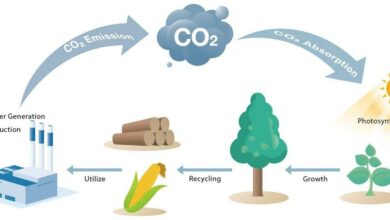The ability to persuade others is a valuable skill that can help you achieve your goals in both your personal and professional life. However, many people mistakenly believe that persuasion involves using force or manipulation to get what you want. In reality, the most effective persuasion techniques involve building influence and trust through genuine communication and relationship building. The power of persuasion is not about using force or coercion to get others to do what you want, but rather about creating a positive influence that inspires others to want to help you achieve your goals.
Understanding the art of persuasion
The art of persuasion is a powerful tool that can be used to influence others without resorting to force or coercion. At its core, persuasion is about the ability to shape opinions, attitudes, and behaviors through effective communication and reasoning.
To become a master of persuasion, it is essential to understand the psychology behind why people think and act the way they do. By tapping into key principles such as reciprocity, social proof, authority, liking, consistency, and scarcity, you can craft persuasive messages that resonate with your audience on a deeper level.
Furthermore, developing strong emotional intelligence and empathy can help you connect with others on a personal level, building trust and rapport that are essential for successful persuasion. By listening actively, understanding others’ perspectives, and addressing their needs and concerns, you can tailor your arguments and appeals to align with their values and beliefs.
In essence, the art of persuasion is not about manipulating or deceiving others, but rather about building genuine relationships and guiding individuals towards making informed decisions that benefit both parties. By mastering the principles of persuasion and approaching interactions with empathy and respect, you can build influence and achieve your goals without the need for force or coercion.
The difference between persuasion and manipulation
Persuasion and manipulation are two distinct concepts that can often be confused. Understanding the difference between the two is crucial for building positive and ethical influence. Persuasion involves convincing someone to adopt a certain belief, take a particular action, or make a decision based on logic, reasoning, and credible information. It aims to empower individuals to make informed choices that align with their best interests.
On the other hand, manipulation involves using deceptive or coercive tactics to influence someone’s thoughts, behaviors, or decisions for personal gain or hidden motives. Manipulation often exploits vulnerabilities, uses emotional manipulation, or distorts information to achieve a desired outcome without considering the well-being or autonomy of the other person.
In essence, persuasion is about building trust, fostering genuine connections, and respecting the autonomy of others, while manipulation involves deception, control, and self-serving intentions. By understanding the distinction between persuasion and manipulation, individuals can cultivate authentic influence that is based on transparency, empathy, and mutual respect.
Building rapport and trust
Building rapport and trust is the cornerstone of any successful relationship, whether personal or professional. When it comes to persuasion, establishing a genuine connection with your audience is crucial. People are more likely to be influenced by those they trust and feel a connection with.
One effective way to build rapport is by actively listening to your audience. Show genuine interest in what they have to say, ask thoughtful questions, and demonstrate empathy. By truly understanding their needs and concerns, you can tailor your message to resonate with them on a deeper level.
Consistency is also key in building trust. Deliver on your promises, provide value consistently, and be transparent in your communication. When your audience sees that you are reliable and honest, they will be more inclined to trust your recommendations and opinions.
Another important aspect of building rapport and trust is being authentic. People can sense insincerity from a mile away, so it’s essential to be genuine in your interactions. Share your story, values, and beliefs openly to show your audience the real person behind the brand.
By focusing on building rapport and trust with your audience, you can establish a strong foundation for persuasion. When people trust and respect you, they are more likely to be influenced by your message and actions.
The importance of active listening
Active listening is a powerful tool that can significantly enhance your ability to persuade and influence others without exerting force. In today’s fast-paced world, where communication often feels rushed and superficial, taking the time to truly listen to others can set you apart and establish a deeper connection.
When you actively listen to someone, you demonstrate respect and empathy, showing that you value their thoughts and feelings. This not only helps to build trust but also allows you to gain valuable insights into the other person’s perspective, concerns, and motivations.
Moreover, active listening enables you to tailor your messages and responses more effectively, as you are better able to understand the nuances of the conversation and respond in a way that resonates with the other person. By truly listening, you can uncover hidden objections, address underlying needs, and frame your arguments in a way that is most persuasive to your audience.
In essence, active listening is not just about hearing words but about understanding the emotions and intentions behind them. By honing this skill, you can become a more influential communicator, fostering stronger relationships and achieving greater success in your personal and professional interactions.
Utilizing the power of storytelling
Storytelling is a powerful tool that has been used throughout human history to captivate, inspire, and persuade. By weaving narratives into your communication, you can create a strong emotional connection with your audience and make your message more memorable.
When you tell a story, you are not just conveying facts or information; you are transporting your audience into a world where they can see, hear, and feel the experiences you are describing. This engages multiple senses and triggers emotions, making your message resonate on a deeper level.
Moreover, stories have the ability to simplify complex ideas and concepts, making them easier to understand and digest. By framing your message within a narrative structure, you can break down barriers and communicate your point in a compelling and relatable way.
Whether you are trying to sell a product, inspire action, or build trust with your audience, storytelling can be a powerful tool in your persuasion arsenal. By harnessing the power of narrative, you can influence others in a subtle and effective manner, leading to lasting connections and positive outcomes.
Establishing credibility and expertise
Establishing credibility and expertise is essential when it comes to building influence without force. Customers are more likely to trust and listen to someone who is knowledgeable and experienced in their field. One way to establish credibility is by showcasing your expertise through content marketing. This could include writing blog posts, creating videos, or sharing case studies that demonstrate your knowledge and success in your industry.
Another way to build credibility is by obtaining certifications or endorsements from reputable sources. By showcasing these credentials on your website or marketing materials, you are providing tangible evidence of your expertise to potential customers. Additionally, obtaining testimonials and reviews from satisfied customers can help to build trust and credibility with new prospects.
Consistency is key when it comes to establishing credibility and expertise. By consistently delivering high-quality products or services and providing valuable information to your audience, you will gradually build a reputation as a trustworthy and knowledgeable authority in your field. This will not only attract new customers but also help to retain existing ones, as they will continue to see the value in your offerings.
Finding common ground and shared goals
Finding common ground and shared goals is a powerful way to build influence without resorting to forceful tactics. In any interaction, whether it be a business negotiation, a personal relationship, or a team project, establishing common ground creates a foundation of understanding and mutual respect.
When you identify shared goals with the other party, you can work together towards a common objective, leading to a more harmonious and productive relationship. This shared purpose fosters collaboration and cooperation, as both parties are invested in achieving the same outcome.
Moreover, finding common ground allows you to empathize with the other person’s perspective, which can help bridge differences and build trust. By demonstrating that you value their goals and interests, you can forge a stronger connection and influence their decisions in a positive way.
Ultimately, building influence through finding common ground and shared goals is about creating win-win situations where both parties benefit and feel heard. It’s a subtle yet powerful way to persuade others and build lasting relationships based on mutual understanding and cooperation.
Emphasizing benefits over features
When it comes to persuading others, emphasizing benefits over features can make a significant impact. While features describe the qualities and functionalities of a product or service, benefits explain how those features directly improve the customer’s life or address their needs.
By focusing on benefits, you are better able to connect with the customer on an emotional level and demonstrate the value that your offering can bring to their lives. For example, instead of simply highlighting that a smartphone has a high-resolution camera (feature), you could emphasize how it allows users to capture precious moments with clarity and detail, creating lasting memories (benefit).
By highlighting the benefits of your product or service, you make it easier for customers to see how it can solve their problems or enhance their lives. This approach shifts the conversation from technical specifications to real-world applications, making your offering more compelling and relevant to your audience.
Remember, people are often more interested in what a product can do for them rather than its technical specifications. By emphasizing benefits over features, you can effectively communicate the value of your offering and build influence without the need for forceful tactics.
Overcoming objections and addressing concerns
When it comes to building influence without force, overcoming objections and addressing concerns is a key component. In any interaction, whether it be a sales pitch, a negotiation, or simply trying to persuade someone to see your point of view, objections and concerns are bound to arise.
To effectively overcome objections, it is important to first listen actively to the other party’s concerns. Understanding their perspective and the reasons behind their objections can provide valuable insights into how to address them. It’s essential to acknowledge their concerns genuinely and empathetically, showing that you value their opinion and are willing to engage in a constructive dialogue.
Offering solutions or alternatives to address their objections can help alleviate their concerns and build trust in your ability to meet their needs. Providing clear and concise information, backed up by evidence or testimonials, can also help reinforce your credibility and persuade them to reconsider their objections.
By proactively addressing objections and concerns, you demonstrate your commitment to understanding and meeting the needs of the other party, which can ultimately lead to building influence and achieving mutually beneficial outcomes.
The ethical considerations of persuasion
When it comes to the art of persuasion, ethical considerations play a crucial role in determining the impact and longevity of your influence. It is important to remember that persuasion should never involve manipulation or coercion. Instead, the focus should be on building trust, fostering genuine connections, and providing value to others.
Ethical persuasion involves being transparent and honest in your communication, respecting the autonomy and decisions of others, and always prioritizing the well-being of those you are seeking to influence. It is about empowering individuals to make informed choices that align with their values and interests, rather than pressuring or deceiving them into compliance.
As a persuasive communicator, it is essential to approach each interaction with empathy, empathy, and respect for the diverse perspectives and beliefs of others. By cultivating a foundation of integrity and authenticity in your persuasive efforts, you can build long-lasting relationships based on mutual trust and respect. Ultimately, practicing ethical persuasion not only enhances your influence but also contributes to creating a positive impact on society as a whole.
Cultivating long-term relationships through influence
Building influence without force is all about cultivating long-term relationships with your audience. It’s not just about making a quick sale; it’s about creating a connection that lasts. When you focus on building relationships based on trust, respect, and mutual benefit, you lay the foundation for long-term influence.
One of the key ways to cultivate these relationships is by providing value consistently. This could be through informative blog posts, helpful how-to guides, or engaging social media content. By consistently offering value to your audience, you position yourself as a trusted source of information and expertise in your industry.
Another important aspect of cultivating long-term relationships is listening to your audience. Pay attention to their needs, concerns, and feedback. By showing that you care about their opinions and are willing to address their concerns, you build trust and credibility.
Additionally, engaging with your audience on a personal level can help solidify your relationship with them. Respond to comments and messages, ask for their input on new products or services, and show genuine interest in their lives. By treating your audience as individuals rather than just customers, you can create a strong bond that will keep them coming back to you time and time again.
Influence is not about forcing people to do what you want; it’s about inspiring and empowering them to make their own decisions. By focusing on building long-term relationships based on trust, value, and genuine engagement, you can cultivate influence that will stand the test of time.
Practical exercises to improve your persuasion skills
Improving your persuasion skills can greatly enhance your ability to influence others positively. Here are some practical exercises that you can incorporate into your daily routine to hone your persuasion techniques:
1. Role-playing scenarios: Practice different persuasive techniques by engaging in role-playing scenarios with a friend or colleague. This will allow you to experiment with different approaches and receive feedback on your effectiveness.
2. Mirror and match: Pay attention to the body language and communication style of the person you are trying to persuade. Mirroring their gestures, tone of voice, and pace of speech can help build rapport and establish a connection that enhances your persuasive efforts.
3. Active listening: Effective persuasion starts with understanding the needs and concerns of the other person. Practice active listening by paraphrasing their points, asking clarifying questions, and demonstrating empathy to build trust and credibility.
4. Storytelling: Develop your storytelling skills to make your message more engaging and memorable. Use anecdotes, case studies, or personal experiences to illustrate your points and appeal to the emotions of your audience.
5. Feedback solicitation: Seek feedback from others on your persuasive efforts to gain insights into areas for improvement. Constructive criticism can help you refine your approach and tailor your persuasive techniques to different situations and audiences.
By incorporating these practical exercises into your daily routine, you can enhance your persuasion skills and become a more influential communicator in both personal and professional settings.
Real-world examples of successful persuasion
Real-world examples of successful persuasion can be found in various industries and contexts, showcasing the power of influence in action. One notable example is Apple’s marketing strategy, which emphasizes sleek design, innovative technology, and a focus on user experience to persuade consumers to invest in their products. By creating a strong brand identity and leveraging persuasive messaging, Apple has cultivated a loyal customer base that eagerly anticipates each new product release.
Another compelling example of successful persuasion is seen in the fitness industry, where personal trainers and wellness coaches utilize motivational techniques and goal-setting strategies to inspire clients to commit to their health and fitness goals. By tapping into individuals’ intrinsic motivations and providing personalized support, these professionals effectively persuade clients to adopt healthier habits and stay committed to their fitness journey.
In the realm of politics, successful persuasion can be observed through impactful speeches and compelling storytelling that resonate with voters and inspire action. Politicians who effectively communicate their vision, connect with their audience on an emotional level, and address key concerns can sway public opinion and garner support for their policies and initiatives.
These real-world examples highlight the diverse ways in which persuasion can be utilized to influence behavior, shape perceptions, and drive action across different industries and spheres of influence. By studying these successful cases, individuals can glean valuable insights into the art of persuasion and apply proven strategies to build influence without force in their own endeavors.
Final thoughts on building influence without force
Building influence without force is a subtle yet powerful art that requires patience, authenticity, and genuine connection with your audience. By focusing on adding value, fostering trust, and engaging in meaningful conversations, you can establish yourself as a trusted authority in your niche.
Remember, influence is not about coercion or manipulation; it’s about inspiring and empowering others to make positive choices and take action. By leading with empathy, understanding your audience’s needs and desires, and offering solutions that truly benefit them, you can cultivate lasting relationships built on mutual respect and reciprocity.
In today’s competitive digital landscape, where attention is scarce and trust is paramount, building influence without force is more important than ever. By consistently delivering value, staying true to your values, and always putting your audience first, you can create a loyal following that will support you and your brand for years to come. So, embrace the power of persuasion with integrity and empathy, and watch your influence grow organically through genuine connections and meaningful interactions.
In a world where persuasion is often associated with forceful tactics, our blog post aimed to highlight the power of influence without coercion. We explored the art of persuasion in a way that focuses on building connections and trust rather than exerting pressure. By understanding the principles of persuasion and employing them in a genuine and empathetic manner, you can enhance your ability to influence others positively. We hope this article has inspired you to leverage the power of persuasion ethically and effectively in your personal and professional interactions. Remember, true influence comes not from force, but from building authentic relationships.





